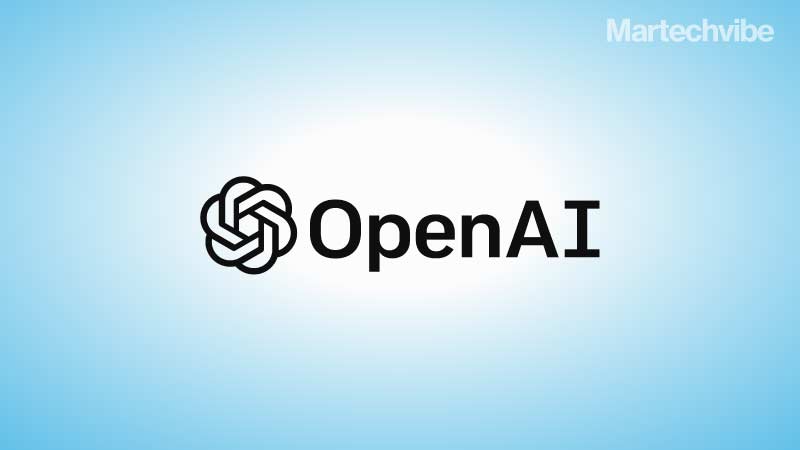What Could Go Wrong With ChatGPT?
Marketing leaders may be thrilled about generative AI. But to find enterprise applications, it has a way to go in offering more control and curation. Martechvibe asked three experts about what is in store for the future of ChatGPT There is plenty to celebrate with ChatGPT. If it could make Google launch a nervous response […]
Topics

Marketing leaders may be thrilled about generative AI. But to find enterprise applications, it has a way to go in offering more control and curation. Martechvibe asked three experts about what is in store for the future of ChatGPT
There is plenty to celebrate with ChatGPT. If it could make Google launch a nervous response – that certainly is a testament. According to company sources, employees at the search engine giant are being nudged to test ChatGPT-like products that use its LaMDA technology to counter Open-AI’s blue-eyed product.
Built on top of OpenAI’s GPT-3 family of large language models, ChatGPT is fine-tuned with both supervised and reinforcement learning techniques.
Martechvibe asked three experts; Meysam Asgari-Chenaghlu, Senior AI Researcher at Ultimate, Colin Crowley, CX Advisor for Freshworks and Sriram P H, Co-Founder and CEO of DaveAI, to play devil’s advocate and comment on challenges that could arise when ChatGPT enters the real-world of marketing and customer service.
Lack of Control with Generative AI is Concerning
Meysam Asgari-Chenaghlu, Senior AI Researcher at Ultimate
“ChatGPT is an open-domain chatbot. This is great for users who want to explore its capabilities, but not so good for support departments handling sensitive customer data. There’s no way of controlling which pieces of information generative AI models will decide to share in their responses — so if customer service teams were to integrate ChatGPT into their tech stack, this would run the risk of leaking private information: like credit card numbers, account login details, or addresses and telephone numbers.
On top of accidental data leakage, open-domain chatbots like ChatGPT are vulnerable to attacks. For example, a user could create a specific input or prompt that makes the chatbot leak information or skip instructions — also known as a prompt injection or prompt leaking.
As well as data breaches, this lack of control makes it challenging to keep automated conversations on brand (and on track). When creating chatbot dialogue flows, one of the key considerations is the tone of voice. But, most importantly, automated support conversations should guide customers to a resolution. While task-oriented bots are designed specifically to solve customer problems, with generative models that can talk about anything, there’s a risk the conversation might end up derailed. Trying to control the output ChatGPT generates is like trying to reign in your rambling uncle at a dinner party — almost impossible.”
ChatGPT Will Create a Two-Tier System
Colin Crowley, CX Advisor for Freshworks
“If ChatGPT becomes more widespread, one wonders how much they will cost – especially considering that current chatbots, with all their faults, are still very pricey for companies – potentially hurting small businesses. ChatGPT could create a stark, two-tier system of chatbots, with wealthy companies adopting ChatGPT and smaller companies stuck with more traditional bots. This is still an issue now, but less so since there are still many common benefits both small and large companies can gain from chatbots, even with current chatbot limitations,” says Crowley.
ChatGPT Will Make Leaders Overconfident
ChatGPT’s advanced AI-based logic could make business leaders overconfident in what chatbots can deliver and result in an over-reliance on chatbots. Right now, it is easier to understand where chatbots don’t add value because they aren’t as advanced as the ChatGPT version – but ChatGPT could make the limits of chatbots much less obvious.
To counterbalance this, businesses will likely have to get a lot better at understanding – which is to say metricising and monetising – the value of the human component in customer interactions. Currently, most businesses only guess at this or define it anecdotally – but more discipline would be needed in putting data behind it and strategically guiding where to inject human beings into engagements.”
Observe How the Technology Adapts to Accommodate the Regulatory Norms
Sriram P H, Co-Founder and CEO of DaveAI
“ChatGPT is still offered as a browser-based conversational querying system which relies on data that is trained only until a year back. So as a conversational system, unless the training is real-time, direct use of this technology is not yet envisaged for enterprises.
However, it may not be too far for the next version release, along with APIs for developers/enterprises to consume. If the solution is offered as a service on the Azure cloud as expected, this may still apply only to a limited set of industry segments where privacy is not a concern. We may still need to observe how the technology adapts to accommodate the regulatory norms of industries such as banking and financial services.”
Conclusion
Last week, Microsoft announced a new multiyear, multibillion-dollar investment with ChatGPT-maker OpenAI. China’s Baidu Inc. is also planning to launch an artificial intelligence chatbot service similar to ChatGPT soon. This will severely impact the market dynamics and price points. For now, marketers must wait and watch.
Meanwhile, marketers can begin exploring the limitations of ChatGPT for the marketing use case and out processes to counter it. A hybrid model of the existing system with a more custom intervention seems like the best bet. Reinforced learning with a human feedback option can enable the technology for enterprise use cases. This means training staff so humans can work with ChatGPT as a complementary tag team.
If you liked reading this, you might like our other stories
How ChatGPT Will Impact the Broader Conversational AI Industry
How To Use Cohort Analysis To Reduce Churn






